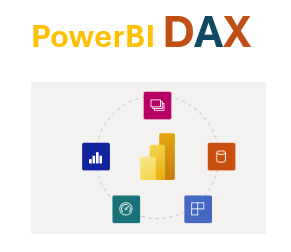These are just some of the many DAX functions available in Power BI. Each function serves a specific purpose and can be used to perform a wide range of calculations and transformations on your data.
Aggregation Functions:
- SUM: Calculates the sum of values.
- AVERAGE: Calculates the arithmetic mean of values.
- MIN: Returns the smallest value in a column.
- MAX: Returns the largest value in a column.
- COUNT: Counts the number of rows in a table or column.
- COUNTA: Counts the number of non-blank values in a column.
- DISTINCTCOUNT: Counts the number of unique values in a column.
Logical Functions:
Text Functions:
Date and Time Functions:
- DATE: Creates a date value from the year, month, and day.
- YEAR: Returns the year portion of a date.
- MONTH: Returns the month portion of a date.
- DAY: Returns the day portion of a date.
- TODAY: Returns the current date.
- NOW: Returns the current date and time.
- DATEADD/DATEDIFF: Adds or subtracts a specified number of units from a date.
Relationship Functions:
- RELATED: Retrieves related values from a related table.
- RELATEDTABLE: Returns a table that contains related records from a related table.

Comments
Post a Comment